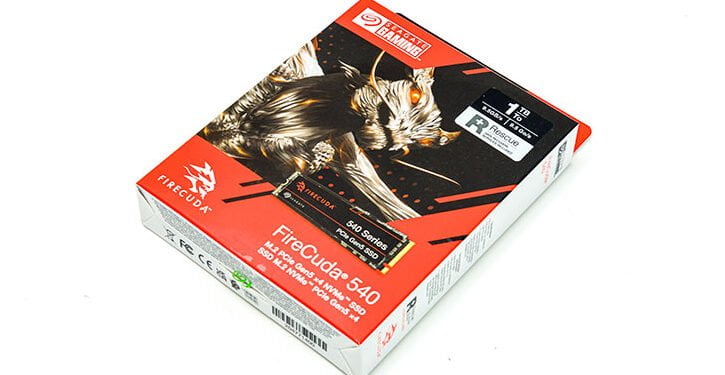Final Score: 92 out of 100
Let us start with the elephant in the room. Yes. The Seagate uses the same ‘E26’ controller as the Crucial Pro T700. Yes. It uses the same Micron “B58R FortisFlash” 232 Layer RG NAND as the T700. No. It is not exactly as fast as the T700. As such, if you absolutely… positively need/want/desire the fastest PCIe 5.0 x4 SSD on the market the FireCuda 540 is not an optimal choice. This however is being incredibly unfair to both drives. The Seagate FireCuda 540 is phenomenally fast. It is not only the fastest SSD Seagate has ever released it is quite literally one of the fastest NVMe SSD drives available today. Only the Crucial T700 is ‘faster’ as it was purposely built to be the fastest drive available today.
We have deliberately put faster in ‘air quotes’ because when Crucial designed the T700 they did not care about anything besides sheer performance. I.E. They wanted a showcase model and they got one. The problem with only caring about one metric is the real-world is more complicated than any one factor. Seagate on the other hand wanted a drive that was more than just great at one metric. To use an analogy, they did not want to make a bleeding edge EV sportscar, they wanted a ICE based Porsche 911 (or Toyota MR2 Spyder if they still made them)… and that is what their engineering team delivered. A drive that is noticeably more user-friendly, is not nearly as temperamental, and yet still will rock your world with the performance it has on tap. Put another way, Seagate wanted (and got) an insanely fast SSD that “Just Works”. That is what you get when you opt for this FireCuda 540 over the competition.
In order to hit all these benchmarks, Seagate made the sensible solution of making use of the adjustable TDP settings Phison baked into their E26. Transforming the most demanding of NVMe 2.0 drives into one that still commands respect, and good cooling, but is not nearly as hard to work with. Yes. It may not seem like much, and is not much from a real-world performance point of view, but a couple watts less does transform this drive into one that most buyers will have fewer issues with.
Make no mistake. Yes, they have toned things down. Down enough that the FireCuda 540’s total power consumption is about the same as what the T700’s controller’s max power draw is set to; however, in return for scaling power consumption back Seagate got a E26 that is blazing fast and can stay fast longer than the T700 before thermal limiting becomes an issue. So much so that the FireCuda 540 can outperform the T700 when paired with either a less than ideally cooled system or less robust (aka not as tall as a house) M.2 heatsink solutions. This one-two combination make it a much more flexible solution for those who have a need for speed… but don’t necessarily want to build a full system around their choice of M.2 SSD.
That is how fast the next generation SSDs are… or conversely how bad a job Phison has done at scaling a controller designed around Enterprise power envelops down to M.2 standards. Either way, the end result is the same: an excellent drive that is blazing fast but not nearly as blazing hot. So, if you are looking for a great all-round drive that can out muscle nearly all other M.2 drives available today the Seagate FireCuda 540 demands to be on your short list.


The Review
Seagate FireCuda 540 1TB Review
The Seagate FireCuda 540 strikes a balance between speed and usability, offering impressive NVMe SSD performance without the need for extensive system modifications. Leveraging adjustable TDP settings, it remains versatile and resilient under various conditions, outperforming competitors even with limited cooling. It's an excellent choice for users seeking a high-performance M.2 SSD that's both user-friendly and fast.









